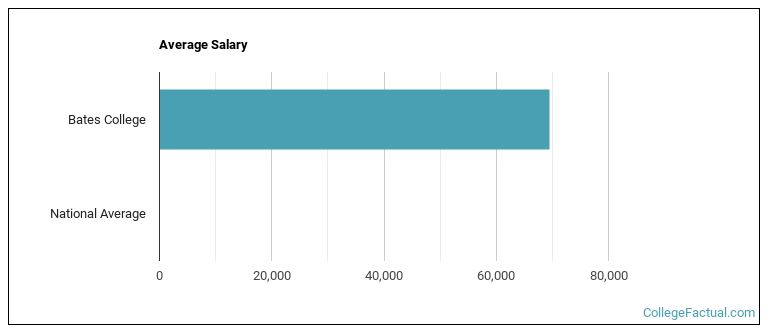 by our College Data Analytics Team
by our College Data Analytics Team
In its yearly rankings, College Factual analyzes over 2,000 colleges and universities to determine which ones are the best in a variety of categories, such as overall value, quality, diversity, which schools are the best for each major, and much more.
Bates College was awarded 7 badges in the 2025 rankings. The highest ranked major at the school is psychology.
Explore the best ranked schools for the programs you are most interested in.
College Factual ranked Bates as #194 out of 2,152 colleges and universities in the country on its 2025 Best Colleges list. This puts it in the top 10% of all schools in the nation. This is an improvement over the previous year, when Bates held the #265 spot on the Best Overall Colleges list.
Bates also holds the #3 spot on the Best Colleges in Maine ranking.
Bates College has a very low acceptance rate of 14%, making it one of the most selective out of all the colleges and universities in the nation. It's probably a good idea to apply to other schools in addition to Bates just in case you don't make the cut.
About 17% of students accepted to Bates submitted their SAT scores. When looking at the 25th through the 75th percentile, SAT Evidence-Based Reading and Writing scores ranged between 700 and 750. Math scores were between 720 and 770.
The student to faculty ratio is often used to measure the number of teaching resources that a college or university offers its students. The national average for this metric is 15 to 1, but at Bates it is much better at 10 to 1. That's good news for students who want to interact more on a personal level with their teachers.
When estimating how much access students will have to their teachers, some people like to look at what percentage of faculty members are full time. This is because part-time teachers may not have as much time to spend on campus as their full-time counterparts.
The full-time faculty percentage at Bates College is 93%. This is higher than the national average of 47%.
The freshmen retention rate of 93% tells us that most first-year, full-time students like Bates College enough to come back for another year. This is a fair bit higher than the national average of 68%. That's certainly something to check off in the good column about the school.
The on-time graduation rate for someone pursuing a bachelor's degree is typically four years. This rate at Bates for first-time, full-time students is 90%, which is better than the national average of 33.3%.
Find out more about the retention and graduation rates at Bates College.
During the 2017-2018 academic year, there were 1,876 full-time undergraduates at Bates.
| $0-30 K | $30K-48K | $48-75 | $75-110K | $110K + |
|---|---|---|---|---|
| $4,512 | $5,529 | $10,800 | $20,211 | $45,686 |
The net price is calculated by adding tuition, room, board and other costs and subtracting financial aid.Note that the net price is typically less than the published for a school. For more information on the sticker price of Bates, see our tuition and fees and room and board pages.
While almost two-thirds of students nationwide take out loans to pay for college, the percentage may be quite different for the school you plan on attending. At Bates, approximately 13% of students took out student loans averaging $8,728 a year. That adds up to $34,912 over four years for those students.

Get more details about the location of Bates College.

Contact details for Bates are given below.
| Contact Details | |
|---|---|
| Address: | 2 Andrews Road, Lewiston, ME 04240 |
| Phone: | 207-786-6000 |
| Website: | www.bates.edu/ |
| Most Popular Majors | Bachelor’s Degrees | Average Salary of Graduates |
|---|---|---|
| Child Development & Psychology | 83 | $47,376 |
| Economics | 68 | $71,187 |
| Political Science & Government | 57 | $41,055 |
| Natural Resources Conservation | 40 | $38,437 |
| General Biology | 37 | $30,613 |
| Sociology | 35 | $42,170 |
| Mathematics | 27 | NA |
| History | 26 | NA |
| Neurobiology & Neurosciences | 21 | NA |
| Biochemistry, Biophysics & Molecular Biology | 20 | NA |
Footnotes
*The racial-ethnic minorities count is calculated by taking the total number of students and subtracting white students, international students, and students whose race/ethnicity was unknown. This number is then divided by the total number of students at the school to obtain the racial-ethnic minorities percentage.
References
More about our data sources and methodologies.